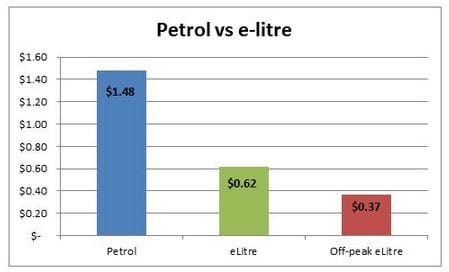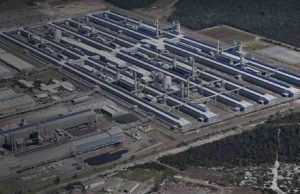A new report has uncovered that the cost of recharging electric cars could be as little as a quarter of the $1.50 a litre it currently costs to fill petrol-run cars.
Analysis by the Energy Supply Association of Australia (ESAA) found that an equivalent litre of electricity, or e-litre, could cost from 37 cents in off peak up to 62 cents in peak prices. It found that electric cars have the equivalent fuel costs of approximately 3 cents per kilometre, compared to 10 cents per kilometre for conventional cars.
The ESAA represents most of the country’s generators and network suppliers. Many of these businesses are being impacted by reduced demand for electricity. Some analysts, and some of its members, suggest that increased electric vehicle ownership could be a solution to those problems.
CEO Matthew Warren says electric cars are not only a “faster, cleaner, quieter and safer driving experience, they are also cheaper to run,” with electric engines being “simpler and far more efficient than the most advanced combustion engines.”
Electric cars release almost no air pollutants when they are driven, allowing consumers to eliminate daily greenhouse gas emissions that would have once come from petrol based cars. (Although it should be noted that electric vehicles may only be as clean as the fuel that charges the battery).
 However, ESAA said if fuel combustion alone is considered, even when the electricity used to charge electric vehicles (EV’s) comes from a carbon dioxide-emitting source, such as a coal or gas-fired powered plant, the net CO2 production from an electric car can be lower than from a comparable combustion vehicle.
However, ESAA said if fuel combustion alone is considered, even when the electricity used to charge electric vehicles (EV’s) comes from a carbon dioxide-emitting source, such as a coal or gas-fired powered plant, the net CO2 production from an electric car can be lower than from a comparable combustion vehicle.
An EV will emit around 22 per cent less CO2 equivalent than new passenger vehicles. ESAA says that this percentage will continue to improve as the electricity supply continues to decarbonise over time, and consumers are able to purchase green power products which enable them to source electricity from low or zero emissions sources.
Warren highlighted “a big selling point for consumers in the future” is savings of up to $10,000 over the cars lifetime, despite higher initial retail prices.
“Rising petrol prices are an understandable source of concern for motorists,” Mr Warren said, “Electric cars will be much cheaper to run and will be an increasingly competitive option as the market develops and cost of EVs comes down.”
Certain areas such as California have already jumped on the electrical car movement where, according to Warren, “there is a critical mass of consumers, vehicle options and recharge facilities”.
Australia’s electric car fleet is still emerging; fewer than 500 pure electric cars have so far been sold here and only a handful of those under development or in production are available locally.
Around 180,000 plug-in electric vehicles (PEVs) have been sold globally, most in the last two years with strongest sales in the US, Japan and Europe, but the plug-in electric vehicle market still only represent around 0.2 per cent of the global car fleet.
According to the industry group the recent emergence of mass market electric vehicles is the result of a convergence of key factors; sustained increases in the cost of fossil fuels, innovation in electric motor and storage technology and the strategic decision by some car companies to take a more aggressive and pro-active approach to electric car development. These trends plus many more are making electric vehicles more and more affordable.
In its report Sparking an Electric Vehicle Debate in Australia, the ESAA recommends several policy options available to Government to increase the incidence of electric cars on Australia’s roads including tax concessions, new infrastructure and capital options, electricity tariff reforms and on road privileges such as use of transit lanes.
As well as these, ESAA wants to reduce barriers to entry including insurance discounts, reducing planning restrictions to enable EV charging stations and discounted vehicle registration fees.
The industry group undertook a review of the Californian market for EVs and identified key demographic and geographic factors common among early adopters of electric vehicles including distance from the CBD, availability of off street parking and households with two or more cars.
Using data from the 2011 Census and applying these metrics to Australian capital cities, esaa uncovered potential electric vehicle hotspots in our state capitals including suburbs such as Frenchs Forest (NSW), Ivanhoe East (VIC), Happy Valley (SA), Bridgeman Downs (QLD), Karrinyup (WA), Acton Park (TAS) and Macarthur (ACT) and potential commercial partnership opportunities with car share companies, airline fleets and retailers.
The ESAA currently planning to launch and e-litre comparison tool which will be regularly updated and feature state-by-state analysis of average petrol and electrical litre prices.
Read the full report here.








